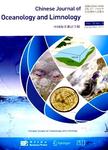Relationship between oxygen concentration, respiration and filtration rate in blue mussel Mytilus edulis
Relationship between oxygen concentration, respiration and filtration rate in blue mussel Mytilus edulis作者机构:Marine Biological Research Centre University of Southern Denmark Hindsholmvej 11 DK-5300 Kerteminde Denmark East China Sea Fisheries Research Institute Chinese Academy of Fishery Sciences Shanghai 200090 China
出 版 物:《Journal of Oceanology and Limnology》 (海洋湖沼学报(英文))
年 卷 期:2018年第36卷第2期
页 面:395-404页
核心收录:
学科分类:07[理学]
基 金:Supported by the Special Scientific Research Funds for Central Non-profit Institutes Chinese Academy of Fishery Sciences(No.2016HY-ZD0102)
主 题:Mytilus edulis filtration rate respiration rate oxygen concentration valve-opening degree
摘 要:The large water-pumping and particle-capturing gills of the filter-feeding blue mussel Mytilus edulis are oversized for respiratory purposes. Consequently, the oxygen uptake rate of the mussel has been suggested to be rather insensitive to decreasing oxygen concentrations in the ambient water, since the diffusion rate of oxygen from water flowing through the mussel determines oxygen uptake. We tested this hypothesis by measuring the oxygen uptake in mussels exposed to various oxygen concentrations. These concentrations were established via N2-bubbling of the water in a respiration chamber with mussels fed algal cells to stimulate fully opening of the valves. It was found that mussels exposecl to oxygen concentrations decreasing from 9 to 2 mg O2/L resulted in a slow but significant reduction in the respiration rate, while the filtration rate remained high and constant. Thus, a decrease of oxygen concentration by 78% only resulted in a 25% decrease in respiration rate. However, at oxygen concentrations below 2 mg O2/L M. edulis responded by gradually closing its valves, resulting in a rapid decrease of filtration rate, concurrent with a rapid reduction of respiration rate. These observations indicated that M. edulis is no longer able to maintain its normal aerobic metabolism at oxygen concentration below 2 mg O2/L, and there seems to be an energy-saving mechanism in bivalve molluscs to strongly reduce their activity when exposed to low oxygen conditions.



